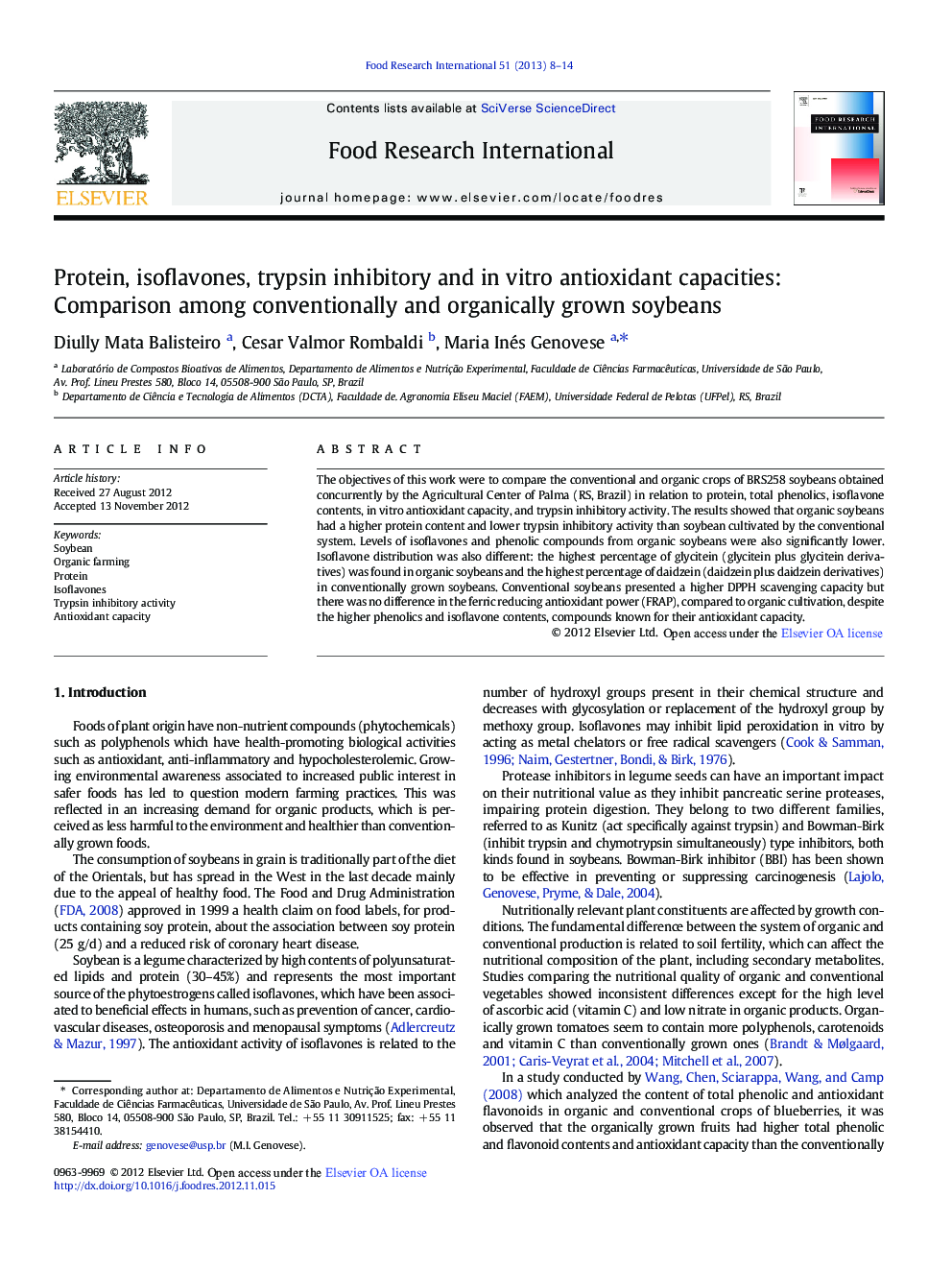| Article ID | Journal | Published Year | Pages | File Type |
|---|---|---|---|---|
| 6398291 | Food Research International | 2013 | 7 Pages |
The objectives of this work were to compare the conventional and organic crops of BRS258 soybeans obtained concurrently by the Agricultural Center of Palma (RS, Brazil) in relation to protein, total phenolics, isoflavone contents, in vitro antioxidant capacity, and trypsin inhibitory activity. The results showed that organic soybeans had a higher protein content and lower trypsin inhibitory activity than soybean cultivated by the conventional system. Levels of isoflavones and phenolic compounds from organic soybeans were also significantly lower. Isoflavone distribution was also different: the highest percentage of glycitein (glycitein plus glycitein derivatives) was found in organic soybeans and the highest percentage of daidzein (daidzein plus daidzein derivatives) in conventionally grown soybeans. Conventional soybeans presented a higher DPPH scavenging capacity but there was no difference in the ferric reducing antioxidant power (FRAP), compared to organic cultivation, despite the higher phenolics and isoflavone contents, compounds known for their antioxidant capacity.
⺠Organic and conventional soybeans (same cultivar, crop and region) were compared. ⺠Organic soybeans had lower levels of isoflavones and total phenolic compounds. ⺠Organic soybeans had lower trypsin inhibitory activity. ⺠Organic soybeans had higher dry matter and protein contents.
